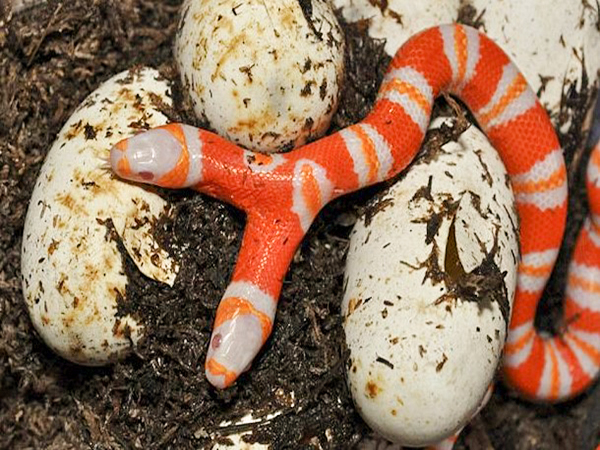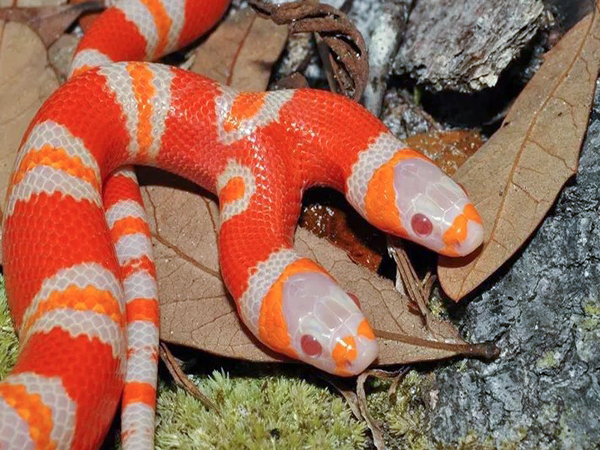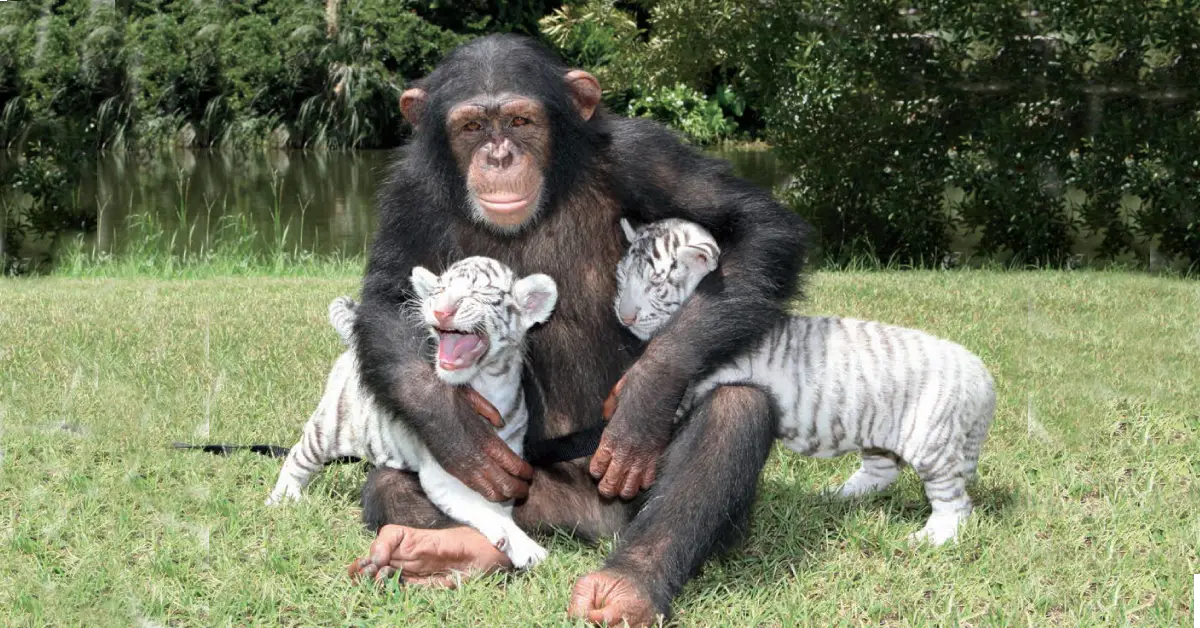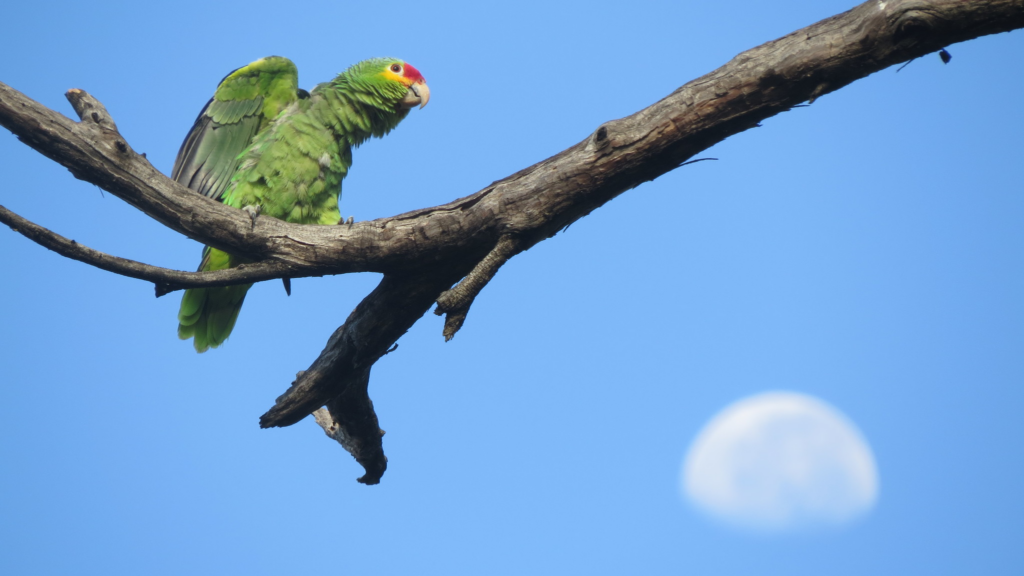Daniel Parker, a field biologist at the University of Central Florida and wildlife tour guide for Sunshine Serpents, dedicates his time to exploring Florida swamps and forests in search of creepy crawlies. Despite encountering many unusual creatures, nothing prepared him for the snake that emerged from an egg in his living room – an invaluable albino Honduran milk snake with an extraordinary feature: two heads.
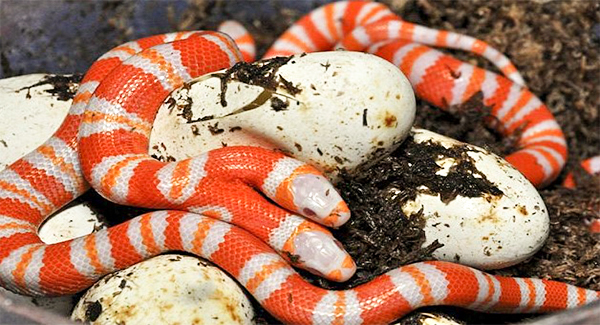
Several months ago, a clutch of eggs was laid by a female albino Honduran milk snake, lacking dark pigmentation and resulting in a stunning coloration of red, orange, and white. When Parker checked the incubation substrate, expecting vibrant snake offspring, he was astonished to find a baby snake with two heads. Most documented two-headed snakes in the past retained typical species coloration, making this albino double-headed snake an unprecedented discovery.
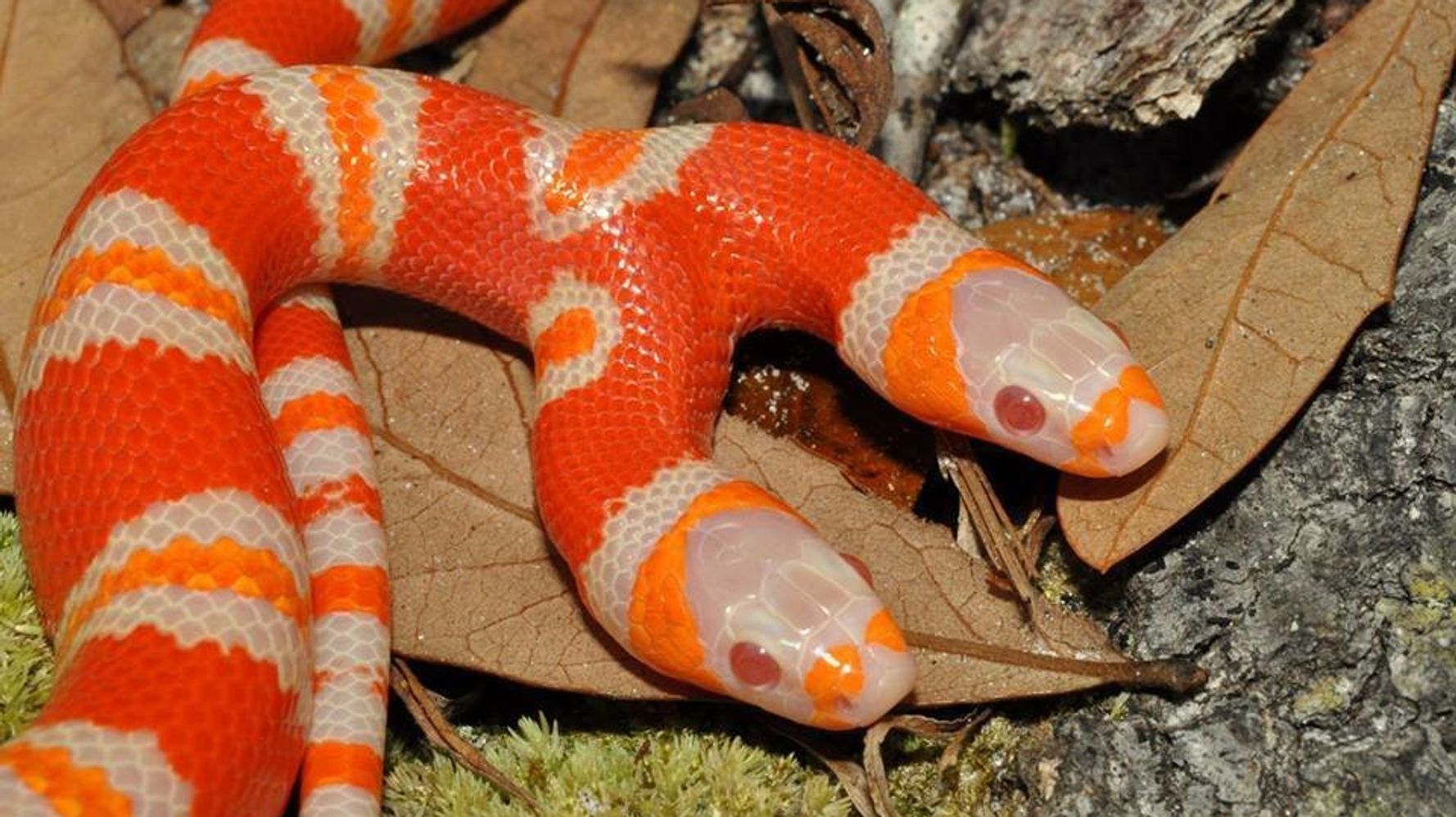
Bicephaly, or “two-headedness,” is extremely rare, occurring in approximately one out of every 10,000 snakes. Parker believes this snake, both albino and two-headed, might be the most beautiful of its kind. Despite its striking appearance, the challenges of survival in the wild are considerable, as bicephalic snakes often struggle due to conflicting commands from two brains in one body.
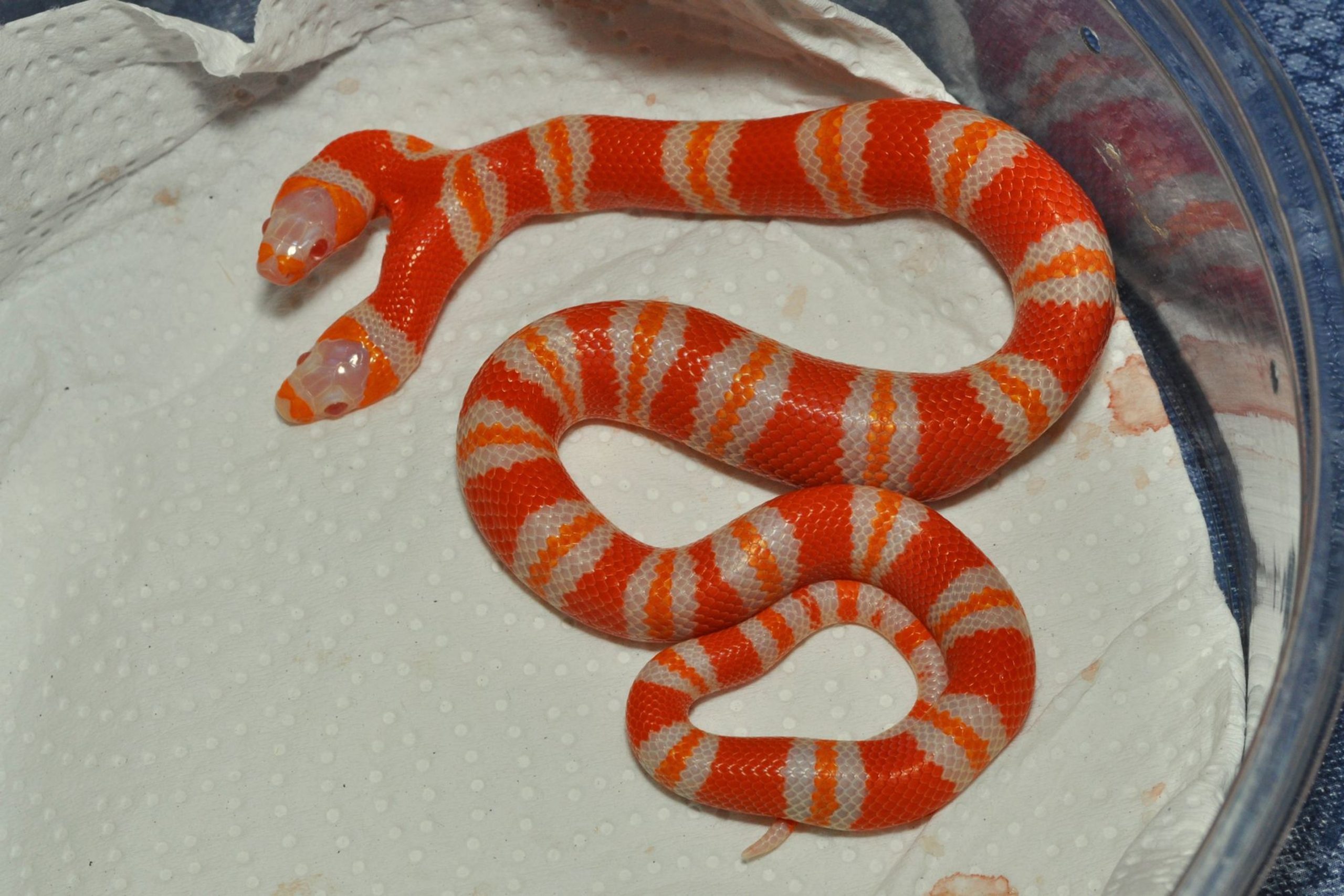
Parker notes that documented cases show two-headed snakes can live up to 20 years in captivity. However, the challenges of coexisting with two brains in a non-homogeneous snake make survival in the wild difficult. Contrary to a myth, milk snakes don’t actually suckle from cows; they prefer cool, dark environments like barns, feeding on insects, lizards, birds, and small mammals.
